The 2023 field season for LEA’s milfoil program was incredible. Thanks to a huge funding boost in 2020 and 2021 we expanded our crew to 18 divers and 4 boats! We continue to focus our work on Long Lake, the Songo River, and Northern Sebago Lake including Frye Island, Sebago Cove, Kettle Cove, and the Northwest River. We were fortunate to have some amazing returning crew members and invested new divers joining the team.
Long Lake: Thanks to the rapid response since 2019, finding milfoil patches in Long Lake is challenging. Crew members focusing on this area spent days sea-sledding (check out our YouTube page for some footage), and might never see a plant. Nonetheless, we did locate singular milfoil plants in the Bridgton Academy beach cove, and small patches of plants near the Harrison boat launch. A concerning discovery this year was a large milfoil patch in Cape Monday Cove, first found during a mid-June survey. Unfortunately, the closure of locks delayed our response until July 24th. Our harvesting boats and barge which we use to deploy benthic barriers were docked near Sebago Lake State Park and could not make the trip up to Cape Monday Cove until the locks reopened. We laid 15 benthic barriers on the patch and continued harvesting and hand-pulling around its edges. Our crew monitored the area until the milfoil was no longer detectable. The majority of the milfoil at Salmon Point and Four Seasons Campground has been removed, we continue to find individual plants and small patches in these areas. Public awareness and knowledge of milfoil will continue to be important to limit the spread and catch new infestations early.
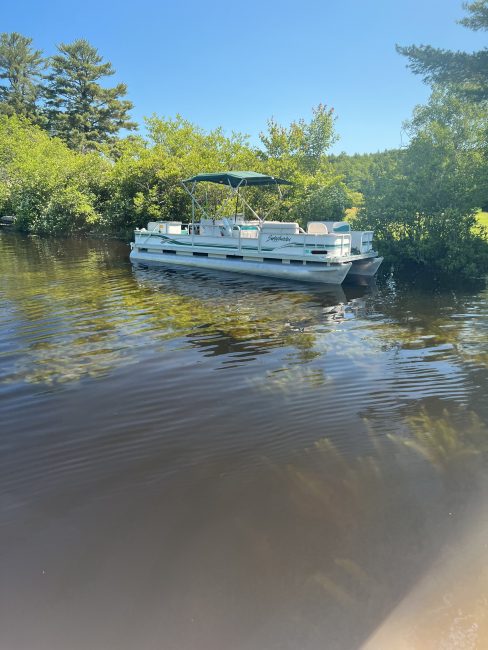
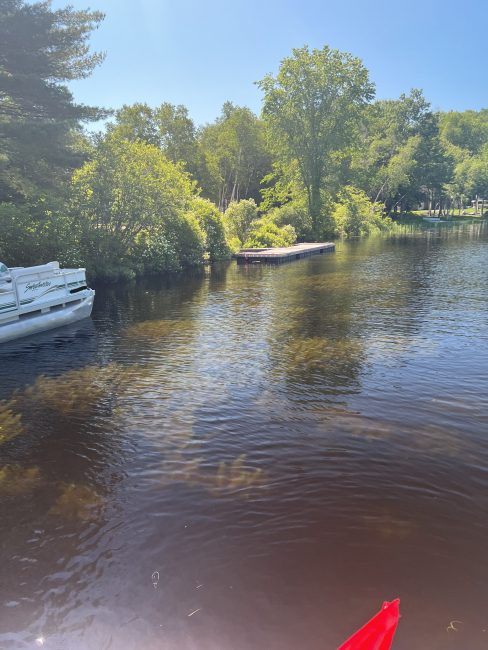
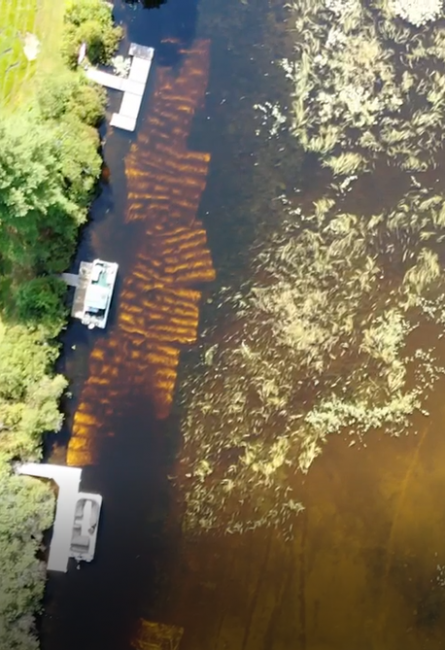
The Songo River is a place we will forever be monitoring, tarping, and harvesting. This highly traveled waterway is challenging to work in, and while it looks nothing like it did when we began there years ago, plants always seem to be lurking! This summer presented a unique challenge for our crew. The typically slow-moving and crystal-clear Songo River experienced prolonged flooding and fast-flowing water due to exceptionally high rainfall in the region. These conditions vastly reduced visibility underwater, making it difficult to spot milfoil. Additionally, many of the benthic barriers laid in the previous year were buried by sediment from flooding or moved to entirely new areas, requiring significant time and effort to retrieve from the riverbed. The heightened water levels in Long Lake and Brandy Pond, caused by the heavy rain, led to the closure of the Songo Locks for extended periods. This was necessary to release excess water out of Brandy Pond and reduce flooding. However, the closure further complicated our work. High water flow in the channel limited our diving activities in certain coves throughout the summer. With the channel and multiple of the larger coves unworkable for portions of the summer, we spent more time in the coves that were more sheltered from the fast water. Even with the unfavorable weather conditions, our crews were able to remove a lot of milfoil and lay multiple barriers. We know that there are more patches that we weren’t able to get this year in both the channel and the boat launch. That area will be a top priority early next season.

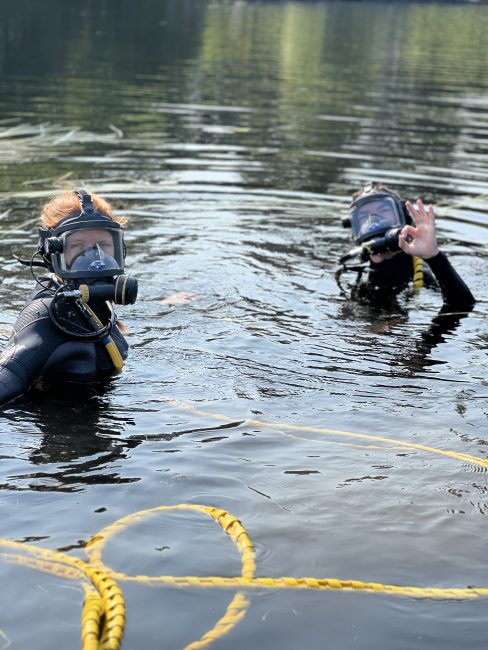
Sebago Cove may truly be our greatest challenge yet. Where the Muddy River meets Sebago Lake was once clearly a stream and wetland (the stream channel is highlighted when water is low), this area became flooded with the installation of dams along the Presumpscot River but remains extremely shallow throughout. It is protected from high winds and waves that can ravage Sebago Lake, and unfortunately, sees many visitors looking for a protected spot to waterski and boat. This is troublesome because the cove is highly infested with milfoil, which boating can chop up and spread, and visiting boaters are sometimes not aware of. Landowners along Sebago Cove are frustrated and looking for some solidarity and some success!
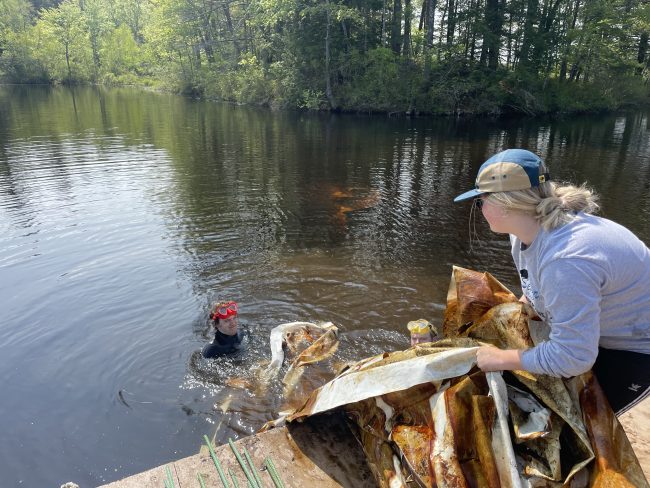
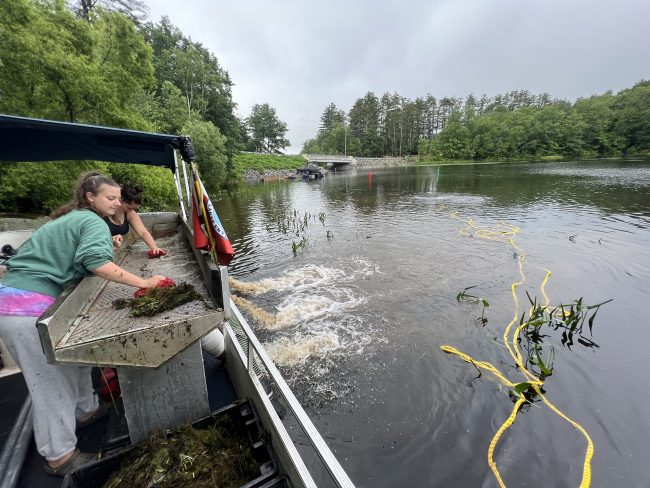
We started the summer by removing the 186 tarps that were laid in 2022. This was slow work with high water and kept our crew busy through the end of June. We then concentrated our efforts on the southern end of the cove, particularly in the busy channel, to prevent milfoil from being cut by boat propellers and spreading to the rest of the lake. Most of the work was done on the edge of the channel where benthic barriers were not an option. The majority of the barriers laid in the cove this year were on a large patch toward the end of the channel where boats frequently enter and exit the channel. Check out the video above showing our day-to-day work in Sebago Cove!
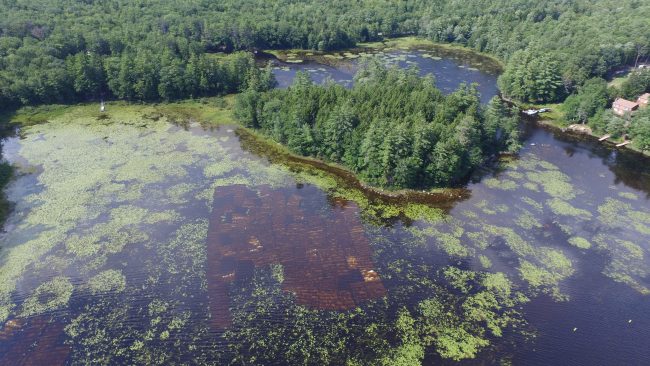
Northwest River: There has been milfoil in the Northwest River for years, and many landowners don’t see a problem with it. However, this is a public boat launch for Sebago Lake, a protected area for a marina, and many private landowners call this place their special spot! We have been working for several years to get huge monocultures of milfoil under some semblance of control here, and after laying almost 200 benthic barriers in 2021, we are feeling pretty confident things are starting to lean towards being more manageable. The river looked good after pulling the barriers at the beginning of this season. We spent the beginning of the summer harvesting and hand-pulling until the crew ran out of work! A huge thank you to Lynn and Joe Borst for docking space, parking, and a general cheer squad welcome. While we were very successful this season, 2024 will require continued maintenance and harvesting to prevent it from returning to a large infestation.
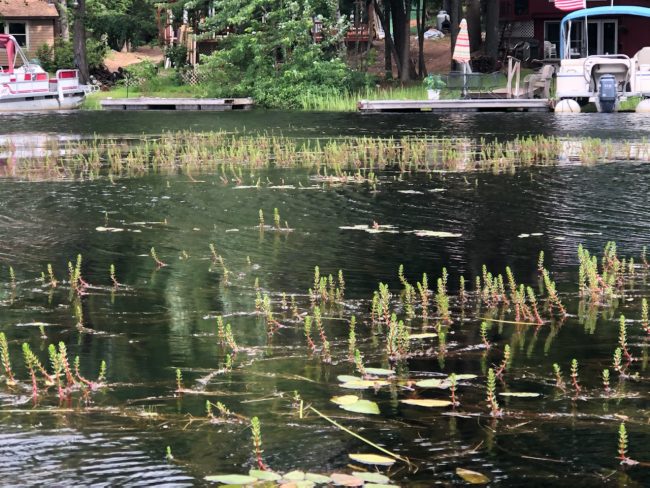
Frye Island: We’ve been visiting Frye Island for some time and have had such a positive experience with landowners there. Plus who doesn’t want to ride a ferry to work…? The infestation at Frye continues to persist. A huge thank you to the Frye Island residents and thank you Roxy for surveying parts of Long Beach Marina and letting us know where the hotspots are. Our crews were able to get in there and knock back the infestation, especially in higher-traffic areas. Frye Island will continue to need maintenance in years to come.
This work requires long-term thinking, making tough choices, and prioritization of goals. The past three years have been a great starting point with an infusion of funding into the milfoil program, but this funding is not indefinite. The 2024 season may look quite different with fewer boats and crews. We will do our best to prioritize high-traffic areas like Long Lake and the Songo River. These areas have the potential for us to prevent a larger, more prominent infestation. Sebago Cove and the Northwest River will likely continue to receive maintenance as much as possible. It is a difficult decision to decide how to most effectively use our limited resources. If you think you see milfoil in your area please send a photo and location to michael@mainelakes.org. We can’t do this without financial support from landowners, members, the Department of Environmental Protection, and funders- thank you for all your help!
